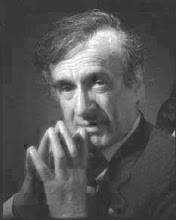
Senator Paul Wellstone (above)
The authors (Four Arrows and James H. Fetzer) of this important book argue that Senator Paul Wellstone's death, 10 days before the 2002 elections, was an assassination, most likely ordered by the Bush administration.
Directly confronting the widespread tendency to reject all "conspiracy theories," the authors point out that "the idea that every theory that implies the existence of conspiracy ought to be rejected out of hand" is no more rational than the idea that every such theory should be accepted. Rather, "each case has to be evaluated on the basis of the evidence that is relevant and available in that case." On that basis, they argue, if we look at ALL the relevant evidence and employ the scientific method of inference to the best explanation, we must conclude that the theory that Wellstone was assassinated is far more probable than the official theory, according to which his airplane crash was an accident.
The evidence includes several facts suggesting that the NTSB (National Transportation Safety Board) colluded with the FBI in a cover-up:
1. FBI agents from Minneapolis arrived at the crash site within 2 hours after the crash, even though the trip from Minnesota to Duluth to the crash site would have taken at least 3 hours--so they must have departed before the plane crashed.
2. When asked for the times at which private flights had arrived in Duluth that morning, the FAA said the records had been destroyed.
3. Considerable disinformation about weather conditions was quickly given to the press.
4. Although regulations called for the investigation to be carried out by the NTSB, not the FBI (because the crash site was not designated a crime scene), the FBI agents were there for 8 hours before the NTSB team arrived.
5. The FBI, even though there illegally, prevented the local "first responders" from taking photographs.
6. Although it was the NTSB's responsibility to determine the cause of the crash and although the FBI's prior presence was illegal, the NTSB leader publicly accepted the FBI's declaration, made before the NTSB's investigation, that there was no evidence of terrorism.
7. When the NTSB team finally carried out its own investigation, it was unable to find either the cockpit recorder, which it assumed the plane had had, or the black box.
8. The NTSB held no public hearings, claiming that it was not a sufficiently "high-profile" case.
9. The NTSB's final report concealed the fact of the FBI's participation.
10. The NTSB investigation was headed by Acting Director Carol Carmody, a Bush appointee who had earlier ruled that there was no foul play in the small airplane crash in 2000 that took the life of Governor Mel Carnahan of Missouri, the Democratic candidate for the Senate who was killed 3 weeks before his expected victory (over John Ashcroft).
The evidence also includes some facts strongly suggesting the falsity of the NTSB's official conclusion, which was that the plane crashed because the pilot failed to maintain proper speed, causing the plane to stall.
1. The plane would have stalled only if it slowed to below 70 knots, yet it was equipped with a device that emitted a loud warning at 85 knots.
2. The plane was being flown by two experienced and fully certified pilots, a fact--obfuscated in the NTSB report-that makes this kind of pilot error very unlikely.
3. The NTSB's theory fails to explain why, about two minutes before the crash, all communication was abruptly terminated and the plane began going off course.
The evidence also includes facts suggesting that the plane was instead brought down by an EMP (electromagnetic pulse) weapon:
1. The plane's fuselage burned, although it was separated from the wings, which contained the fuel.
2. The plane's electrical system, which would be affected by an EMP, was in the fuselage, and the fire from the fuselage gave off blue smoke, which is indicative of an electrical fire.
3. An EMP could explain why the plane simultaneously went off course and lost its radio about two minutes before the crash.
4. At the same time, cell phones and garage doors in the area behaved in a way consistent with the occurrence of an EMP.
5. An NTSB spokesman professed ignorance about the existence of EMP weapons that could have brought down the plane, although the existence of such weapons had been known for several years.
An important part of the authors' case is the fact that the Bush administration would have had several motives:
1. Wellstone's defeat would return control of the Senate to the Republicans.
2. Wellstone's death 10 days before the election meant that $700,000 in the Republican campaign chest could be transferred, the very next day, to the (successful) effort to defeat Max Cleland in the Senate race in Georgia.
3. Wellstone was the biggest obstacle in the Senate to several Republican policies, such as those involving Iraq, Colombia, the SEC, tax cuts, and Homeland Security, and he was the strongest voice in Congress calling for a full investigation into 9/11.
4. Two days before his death, Wellstone reported that Cheney had told him: "If you vote against the war in Iraq, the Bush administration will do whatever is necessary to get you."
5. Wellstone had developed a 7-point lead in the polls over Norm Coleman, the Bush administration's hand-picked candidate.
Finally, with regard to the question whether the Bush administration would commit such a heinous act, the authors argue that an administration that "compounded lie upon lie to . . . send hundreds of thousands of young American men and women into harm's way [in Iraq] is not an administration that would hesitate to kill a single senator."
The authors conclude that the evidence shows beyond reasonable doubt that Wellstone was assassinated. They have, in my view, made a convincing case.
*David Ray Griffin, author of "The New Pearl Harbor" and "The 9/11 Commission Report: Omissions & Distortions"



No comments:
Post a Comment